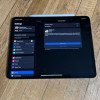All Your Questions on Apple’s Move Away from Intel, Answered

Back in June, Apple announced a major change to its Macs: Starting in late 2020, its new laptops and desktop computers will move away from Intel and use processors built by Apple using the same ARM architecture it uses on phones and tablets. It’s a seismic shift that won’t happen all at once (especially since Apple just updated the Intel-based iMac), but it leaves consumers with an important choice to make. Should you buy an Intel-based Mac now, or wait for one with Apple’s new custom silicon?
Longtime Apple fans will recall that Apple made a similar transition from its PowerPC processors to Intel chips back in 2005. Among the benefits at the time, using the same processor architecture that comparable PCs used meant it was easier for developers to bring popular Windows apps to the Mac (or at least emulate the ones that didn’t get direct ports), ushering in a thriving era of compatibility and development for Mac users.
Today, Macs are much more common, and it’s not as difficult to convince big developers to make apps for Apple’s platforms (some will even fight in court for the privilege). But Apple’s other devices, including the iPhone, iPad, and Apple Watch, use Apple’s own custom processors. As such, they live in their own separate world. Developers making apps for both Macs and iPhones would have to do extra work to make their apps available on both platforms. With the switch to Apple’s own processors, it will be possible to write an app once and run it on most Apple devices with minimal modification.









































































